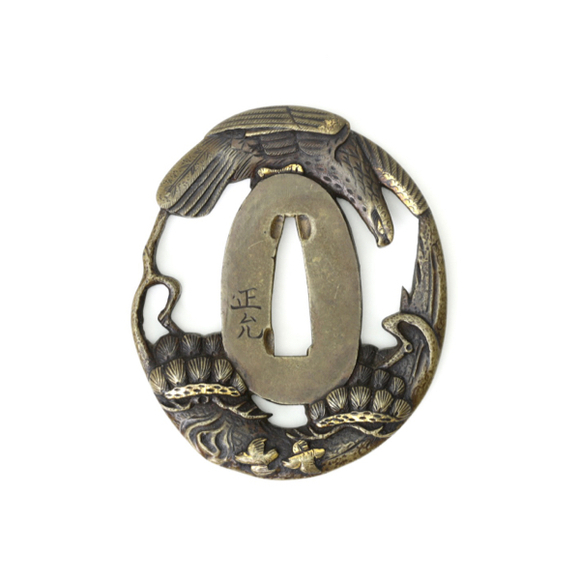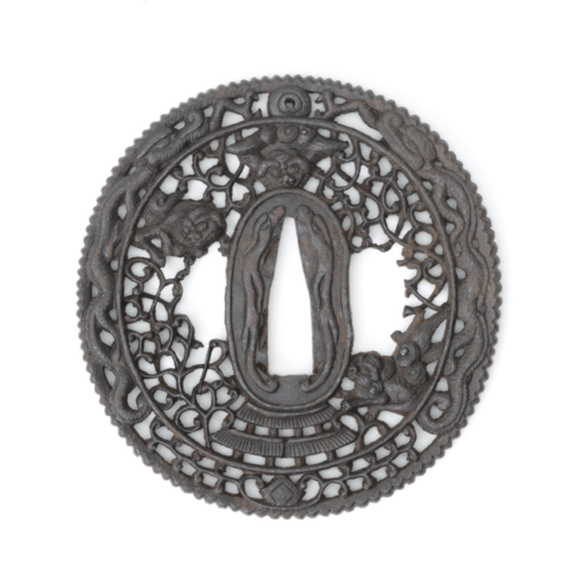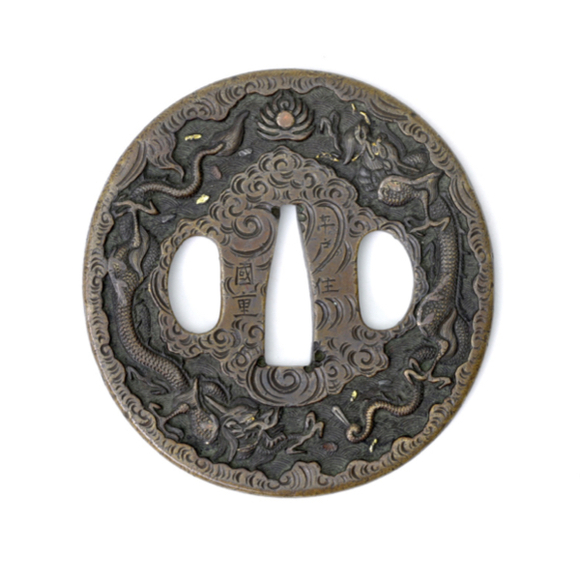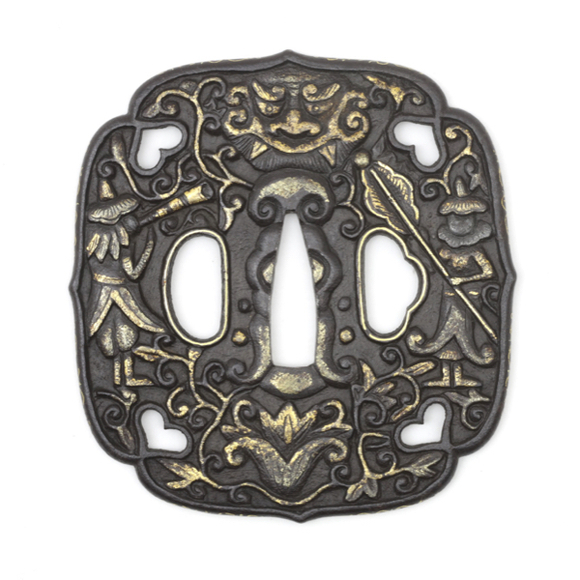Russet iron, one-piece construction with decorative grooves.

Dai sheathed 98.7 cm
Sho sheathed 73.3 cm
Dai unsheathed 96 cm
Sho unsheathed 72.1 cm
Dai 69.4 cm
Sho 54 cm
Dai motokasane 6.8 mm
Dai sakikasane 4 mm
Sho motokasane 6.5 mm
Sho sakikasane 4.5 mm
Dai motohaba 29 mm
Dai sakihaba 18.1 mm
Sho motohaba 29 mm
Sho sakihaba 20 mm
Dai 976 grams
Sho 687 grams
Dai 13.5 cm from guard
Sho 9.5 cm from guard
Japan
Iron, steel, silver, wood, lacquer, gold, silk, stingray skin, horn, shakudō
Blades 15th-16th century
Koshirae 18th-19th century
Originally from the collection of a Dutch diplomat
Then two Dutch private collections
Introduction
Daishō (大小) literally means "big-small". It describes a matching set of swords consisting of a large katana and a smaller wakizashi. Wearing was a privilege only reserved for the samurai class of the Edo period.
This daishō
Both blades are in an old period polish, and signed.

The dai (大) is a slightly shortened katana blade with an early-looking koshizori sugata. It is signed Muneyoshi (宗吉). However, the ridge on the tang moves noticeably to the left between the two mekugi ana, an indication of the removal of material. Most likely, a different signature was removed here, and the Muneyoshi was added. The signature does resemble that of a Muneyoshi line that came from Mino to Echizen, and the blade's workmanship also points towards Mino.1
The shō (小) is an unaltered wakizashi blade that is signed and signed:
備州長船祐定
Bishū Osafune Sukesada
"Sukesada from Osafune (village) in Bizen (province)"
Osafune was a famous sword-making town in Bizen, and was the main production center for quality swords during the 15th and most of the 16th century. The town was wiped out during a flood in 1590, seizing production for several decades.
Several smiths active in this village signed Sukesada, starting around the mid-15th century. The best and most famous of the Sukesada smiths were Yosōzaemon and Hikozaemon, active around 1504-1521 and 1532-1555 respectively. Yosōzaemon's signature was the "crab claw" elements within its hamon, continued by his successors. This wakizashi blade also shows those elements within the hamon, placing its manufacture within the first half of the 16th century.2
It has some tiny nicks on its edge.

Notes
1. Markus Sesko; Koto Meikan. Lulu Publishing, 2014. Page 417.
2. Markus Sesko; Swordsmiths of Japan. Lulu Publishing, 2015. Page 1032-1033.
Koshirae
The koshirae consists of two beautifully lacquered saya with flowers and grass in autumn colors, executed in fine maki-e with sprinkled gold and silver dust.

Tsuka
The hilts or tsuka are wood, covered with ray-skin and wrapped with black silk cord. They are fitted with finely made fuchi kashira of shakudō, a prized copper-gold alloy that was patinated a "raven black". The mounts are finely dotted, called nanako, and decorated with flowers. The work is unsigned but is in Mino Gotō style.
Some damage to the silk wrap of the wakizashi, with a small part missing.



Tsuba
The tsuba is a matching set, made of iron with finely chiseled flowers with gilt details.

They are both signed:
武州住春利作
Bushū-jū Harutoshi saku
"Made by Harutoshi, resident of Bushū"
Harutoshi was a member of the Ito school, active in the 18th and 19th centuries.
Provenance
From the collection of a Dutch diplomat, thence in two private collections before it reached me. The set is published in Japanese Swords In Dutch Collections by Han Bing Siong.





















Unusual tsuba with foreign figures and Chinese auspicious symbols.






